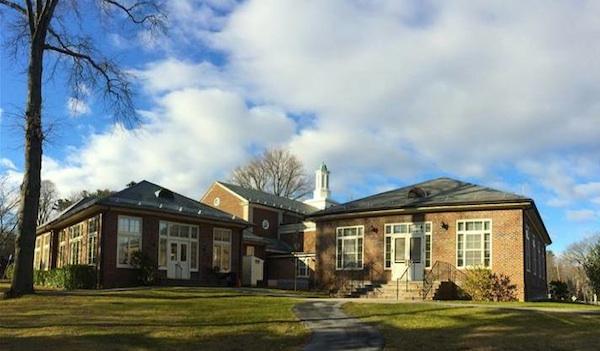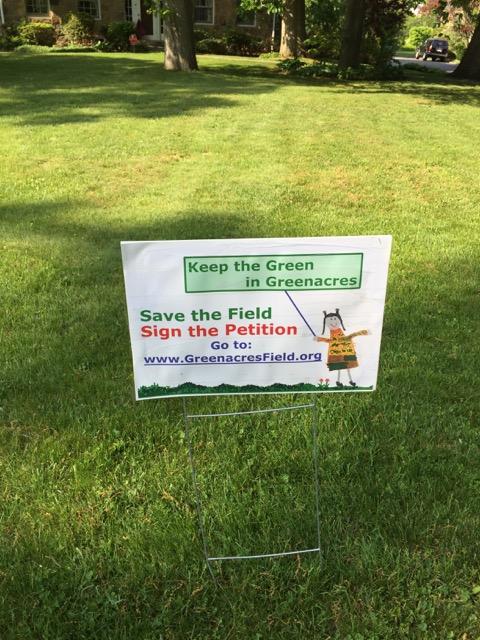What's Best for Greenacres?
- Thursday, 08 October 2015 14:55
- Last Updated: Friday, 09 October 2015 08:08
- Published: Thursday, 08 October 2015 14:55
- Joanne Wallenstein
- Hits: 6441
 This is an opinion piece written by Scarsdale10583 site founder and Greenacres resident Joanne Wallenstein.
This is an opinion piece written by Scarsdale10583 site founder and Greenacres resident Joanne Wallenstein.
The Greenacres School, while quaint and charming, was old when my oldest son began kindergarten in 1991 and it hasn't been improved since. I remember being puzzled by the fact that it had no cafeteria and learned that Greenacres was built at a time when children went home for lunch. Home for lunch? I was working in the city at the time and couldn't believe that the school had not caught on to the fact that many mothers weren't spending their mornings preparing lunch and ferrying their children back and forth to school twice a day.
The fact that the school lacks a driveway and a parking lot has caused years of drama when parents, and yes babysitters, attempted to deliver and retrieve the children. There are safety issues and frustration when drivers don't follow the rules. Then there's Huntington Avenue that runs between the school and the playground. This separation necessitates crossing guards, careful supervision and frequent traffic stops.
The school was crowded as well. As more homes were built in Greenacres, more children registered for school. My daughter's grade included the district's special needs class, requiring an additional classroom. Fifth graders were jammed into small classrooms on the upper floor that lacked air conditioning and were sometimes sweltering in June and September.
During Michael McGill's last year as Superintendent, concerned parents called him to attend a meeting at the school to address classes that had swelled to more than 24 students. In addition to the surge in enrollment, parents were very upset about the facilities and urged the district to address the needs of the soon-to-be 100 year-old school.
When the district planned the latest round of capitol improvements, Greenacres was left out of the $18.1 mm project. Why? Because it was determined that the school required more than modest renovation. Engineers found that the school has inadequate ventilation, chronic water issues, mold in the basement and mechanical systems beyond their useful life spans. The roof needs to be replaced and the classrooms are not large enough to meet New York State standards. Therefore, the administration recommended that Greenacres wait for a few years until another round of financing could be secured.
In the first half of 2015, in response to pleas from parents, the Board asked architects KG&D to make a preliminary survey of the Greenacres School and the site, and come up with some schematics on how the problems might be addressed. When the results were unveiled, some were unhappy with one of the options which was to tear down the existing school and build a new one on the field across the street.
Seeking to take this option off the table, even before it could be properly vetted, opponents organized, gathered signatures and printed signs to "Save the Field" that are now displayed on many Greenacres lawns.
it could be properly vetted, opponents organized, gathered signatures and printed signs to "Save the Field" that are now displayed on many Greenacres lawns.
Arguments for preserving the school remind me of the fight to save "The Shop Around the Corner" in the movie "You've Got Mail." Advocates for "saving the school" contend that School Board members have an agenda and have already decided to do away the building. When the building committee was formed, opponents attacked the methodology for assigning members. The latest struggle involves two seats on the building committee that were designated for representatives from the Greenacres Neighborhood Association. Angry residents demanded that the neighborhood association select representatives that were against the demolition of the school. However, the neighborhood association chose Bob Steves, a former Mayor of Scarsdale and former President of the Board of Education, as well as Lynne Clarke, a long-term resident and respected realtor to assume the two seats on the board.
Neither Steves nor Clarke have taken a position on the issue. They see it as their role to listen, convey the concerns of Greenacres residents and work with the committee to determine what would be the best solution for the entire community. Advocates to "Save the Field" now say that they are not being adequately represented and have gone as far as to call for the dissolution of the neighborhood association.
While those that wish to preserve the school have been highly vocal, others are wondering what it might be like to have Scarsdale's first state of the art elementary school in Greenacres. Forward-thinking educators are calling for flexible and collaborative learning spaces and design labs that can't be accommodated in the current school structure. What effect might a new school have on property values now and in the not so distant future?
The district's schedule calls for the Greenacres Building Committee to start meeting in October and provide their recommendation by December 2015. Perhaps the committee will find that re-districting is required, and that a certain portion of homes that are now in Greenacres will be considered part of a different elementary school district. Or they might determine that the high water table underneath the school will continue to pose problems in the future and that the portion of Huntington Avenue in front of the school should be closed.
There are many questions to be answered. In addition to recommending a building option that will best serve Greenacres in the future, administrators will need to consider what will happen to students during the construction? Will they go to school in trailers – or be bussed to other facilities?
Public forums will be held in January and February 2016 with a district-wide bond vote in May 2017. Every Scarsdale resident will have the right to vote for or against the bond.
There's a long road ahead and from what I can see, no decisions have been made. In my view it seems premature to close off any options until further exploration and analysis are done. The district is fortunate to have highly qualified administrators, savvy residents and advice from recognized experts in the field.
Let's permit them to do their work and determine what will serve Greenacres best for the next 100 years.







